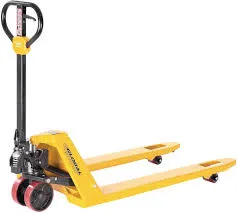


Understanding the Rigging Chain Block Essential Tools for Lifting Operations
In the world of heavy lifting and construction, safety and efficiency are paramount. One of the critical tools that facilitate these objectives is the rigging chain block. This piece of equipment plays a vital role in lifting heavy loads and is widely used in industries ranging from construction to maritime operations.
A rigging chain block, often referred to as a chain hoist or block and tackle, is a device that employs a chain to lift or lower heavy objects. It consists of a chain, which is looped over a series of pulleys attached to a block. The user pulls on one end of the chain to lift the load, while the other end remains anchored. The mechanical advantage gained through the pulleys allows users to lift heavy items with comparatively less effort.
Components of a Rigging Chain Block
A typical rigging chain block comprises several essential components
. The chain is usually made from durable materials like high-tensile steel, ensuring it can withstand significant weight and stress. The block, housing the pulley system, is designed to minimize friction, which enhances the efficiency of the lifting process. Additionally, many models feature a safety latch or hook to securely attach the load, minimizing the risk of accidents during lifting operations.Applications and Benefits
Rigging chain blocks are versatile and can be utilized in various applications. In construction sites, they are commonly used to lift building materials such as steel beams, bricks, and heavy machinery. In warehouses and shipping yards, chain blocks aid in moving heavy pallets and containers. Their portability also makes them ideal for rigging temporary setups in theaters and event spaces, where heavy lighting and sound equipment need to be suspended.

The benefits of using a rigging chain block are numerous. The mechanical advantage it provides allows operators to lift significantly heavier loads than they could physically manage. This not only increases productivity but also enhances safety by reducing the need for personnel to physically handle heavy weights. Moreover, modern chain blocks often incorporate features like overload protection and automatic braking systems, further ensuring the safety of workers and assets during operation.
Safety Considerations
Despite their advantages, it is crucial to adhere to safety protocols when using rigging chain blocks. Operators must be trained to understand the proper weight limits and the correct use of the equipment. Regular inspections should be conducted to check for signs of wear and tear, especially on the chain and hooks. Any damaged components should be replaced immediately to prevent accidents.
Furthermore, it’s essential to ensure that the load is balanced and that the rigging is securely attached before lifting begins. This minimizes the risk of the load shifting or falling during the lifting process, which can lead to severe injuries or fatalities.
Conclusion
In conclusion, rigging chain blocks are indispensable tools in the lifting industry. Their ability to lift heavy loads safely and efficiently makes them a staple in various sectors. Understanding their components, applications, and the importance of safety protocols enables operators to utilize these devices effectively. As industries continue to evolve, the rigging chain block will undoubtedly remain a vital asset in achieving safe and efficient lifting operations. Investing in quality equipment, proper training, and safety measures will ensure that the benefits of using rigging chain blocks are fully realized.



